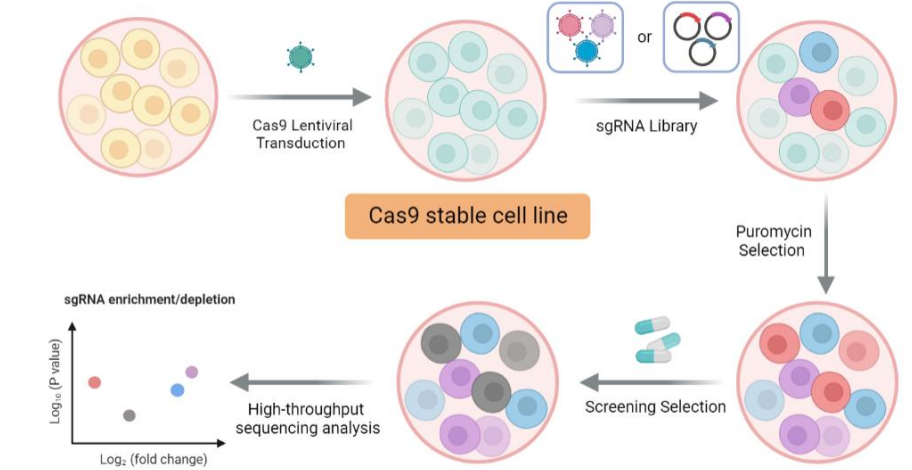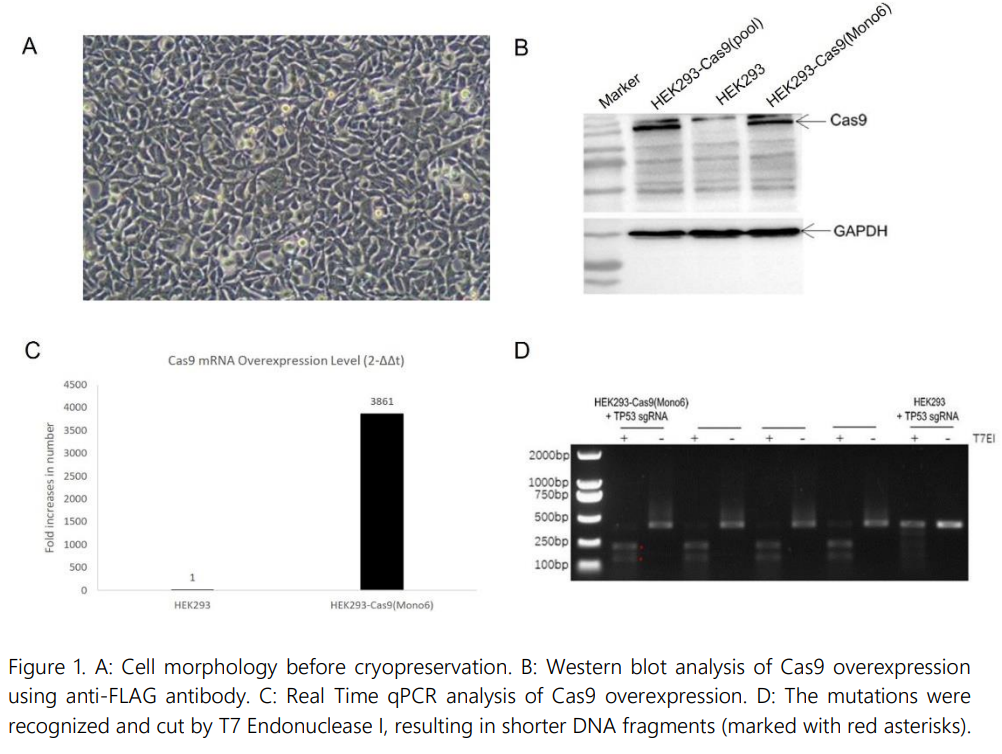Cas9 Cell lines
Cas9 Stable Cell Lines
CRISPR/Cas9 (clustered regularly interspaced short palindromic repeats/CRISPR
associated protein 9) is adapted from a naturally occurring bacterial immune
system which can protect bacteria from damage caused by phage infection. As
a genome editing tool, it is faster, cheaper and more accurate than previous
techniques such as ZFNs and TALENs.

The CRISPR/Cas9 system is composed of two components:
- Cas9 nuclease
- single guide RNA (sgRNA)
By delivering the Cas9 nuclease complexed with sgRNA into a cell, Cas9 is directed by sgRNA, which recognizes homologous
DNA sequence, and induces a double strand break (DSB).
In the presence of donor template, the DSB can be repaired by HDR (homology-directed repair)
pathway enabling precise editing such as point mutation.
When DNA repair template is not provided, the cell is forced to undergo NHEJ (non-homologous
end joining) pathway resulting in indels (insertions or deletions).
Apart from wild-type Cas9, a few variants have been developed, with
improved specificity or reduced off-target effects. For example, SpCas9-HF1 is a
high-fidelity variant designed to reduce non-specific DNA contacts.
Gen has developed a series of Cas9 expressing stable cell lines. We
have achieved Cas9 stable expression in several types of cancer cells which enable
scientists to study gene functions in certain types of cancer. The gene coding Cas9
nuclease can also be stably integrated into specific host cell genome according to
customers’ experimental requirements.
The activity of Cas9 in each constructed stable cell line has been functionally validated by T7 Endonuclease I.
1. Ideal cell models for downstream genome editing experiments
including gene knock-out, gene knock-in, gene tagging, etc.
2.High-throughput sgRNA screening.
3.Study gene functions in multiple cancer cells.
4.Validation of protein target of certain drug candidate.
5.Identification of drug candidates for protein of interest.
Applications
1. Robust cell line development platforms & Excellent scientific teams
2.Flexible construction strategies: Lipofectamine™ transfection,
Electroporation, Lentivirus transduction
3.Strict quality control
4.Stable Cas9 integration minimizes the need for co-transfection or cotransduction of sgRNAs, ideal for high-throughput sgRNA applications.
5.Flexibility in cell types including liver cancer cells, breast cancer cells, colon
cancer cells, lung cancer cells, pancreatic cancer cells, gastric cancer cells,
embryonic kidney cells, etc.
6.Functional validation of Cas9 by T7 Endonuclease I assay
Our
Advantages
1. Q-PCR, WB, T7 Endonuclease I assay
2.No mycoplasma contamination
3.Bacterial and fungal test
Quality
Control
CSC-RO0152 Cas9 Stable Cell Line-HEK293

Figure 1. A: Cell morphology before cryopreservation. B: Western blot analysis of Cas9 overexpression
using anti-FLAG antibody. C: Real Time qPCR analysis of Cas9 overexpression. D: The mutations were
recognized and cut by T7 Endonuclease I, resulting in shorter DNA fragments (marked with red asterisks).
CSC-RO0186 Cas9 Stable Cell Line-C2C12